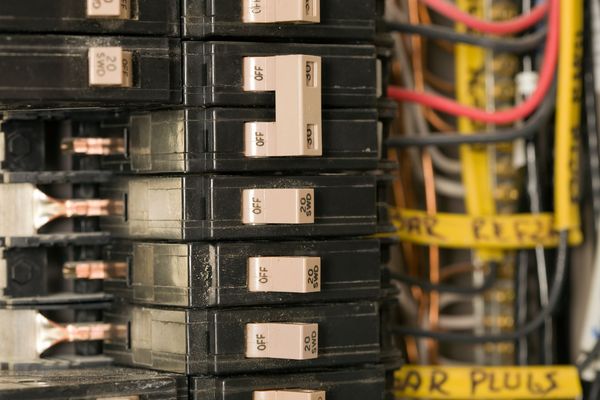Outdoor lighting receptacle, and wiring
With the warm weather on the way, it's time to take a look at some of our outdoor lighting, receptacles, and wiring. With rainy days to come, wiring and devices need to be checked for safety and functionality. Here are some great articles to address these topics.
01 of 09
Outdoor Lighting and Receptacle Codes
Alexander Hafemann/Getty Images
With any electrical installation, there are some electrical codes that must be followed and outdoor electrical installations are no different. Here are a few outdoor lighting and receptacle codes that you will need to know before wiring your home or making room additions.
02 of 09
Outdoor Motion-sensor Security Lighting
Every home has dark spots around the outside of their home. The areas that need special attention are the entry points, mainly the entrance doors. You may choose an outdoor light that requires that you manually turn it on and off. These type, however, don't provide lighting on your trip into the home without first turning them on.
03 of 09
National Electrical Code Outdoor Electrical Wiring Tips
The National Electrical Code has some very specific rules and regulations about underground wiring methods and points of attachment. This is a look at the highlights of the outdoor sections of the code.
Use either ground fault circuit interrupter (GFCI) receptacles or GFCI Breakers to protect the users of these receptacles.
If more than four receptacles are connected to a circuit, a 20-amp circuit should be installed. Likewise, if an outdoor lighting load is to have more than one light fixture that exceeds 300 watts, be sure to use a 20-amp circuit to accommodate the load. Read more...
04 of 09
Install Ground Fault Circuit Interrupter Outlets
To better understand what is involved in installing a ground fault circuit interrupter (GFCI) in your home, you’ll first need to have an understanding of basic electrical wiring. If you feel at all uncomfortable about working on an electrical circuit, then it might be best the call a professional. Understanding basic circuitry, knowing where to turn circuits off and on, being able to test circuits and keep track of what goes where are all essential and important.
.
05 of 09
Spa and Hot Tub Outdoor Wiring
Spas and hot tubs are a relaxing way to unwind at the end of the day. They come in many different sizes and shapes. Jet pumps move the water around and shoot them through jets within the tub itself. Some of the larger units may also have two water pumps and a blower motor in order to deliver water pressure through the large amount of jets they must supply.
06 of 09
What is Direct Burial Cable?
Direct burial cable is a special type cable that is designed to be run in a trench underground without the use of conduit to surround it. The electrical wires are encased in a thermoplastic sheath that seals out moisture and protects the wires within.
Direct burial cable, often called exterior-rated cable or UF cable (short for the underground feeder), comes in a gray jacket and is approved, when installed at the proper depth, location, and is properly sized within the trench.
07 of 09
The Differences Between Overhead and Underground Wiring
When dealing with service entrance cables on new homes, the question often comes up about underground and overhead feeders. Are underground feeds better than overhead feeds? Well, to determine which is best for you, we’ll look at the differences and how each may benefit you. As far as the utility company is concerned, one is just as good as the other and they can install either one for you.
08 of 09
Determining Proper Electrical Wire Size For Underground Circuit Cable Length
When considering the appropriate wire size for a circuit, don't forget to take the circuit length into consideration.Electrical wire, no matter what material it is made out of, has a certain resistance to it. With an increase in cable length, the resistance causes a voltage drop in the circuit.
Continue to 9 of 9 below.
09 of 09
What is a Motion-Sensing Light Fixture
A motion-sensing light incorporates a motion sensor (a switch) that turns on a light when something moves in front of the motion sensor attached to a light fixture. This type of security lighting detects movement in areas you'd like to protect or be aware that someone is lingering in at night. Motion-sensing lights have four parts that make up the light.




Comments
Post a Comment